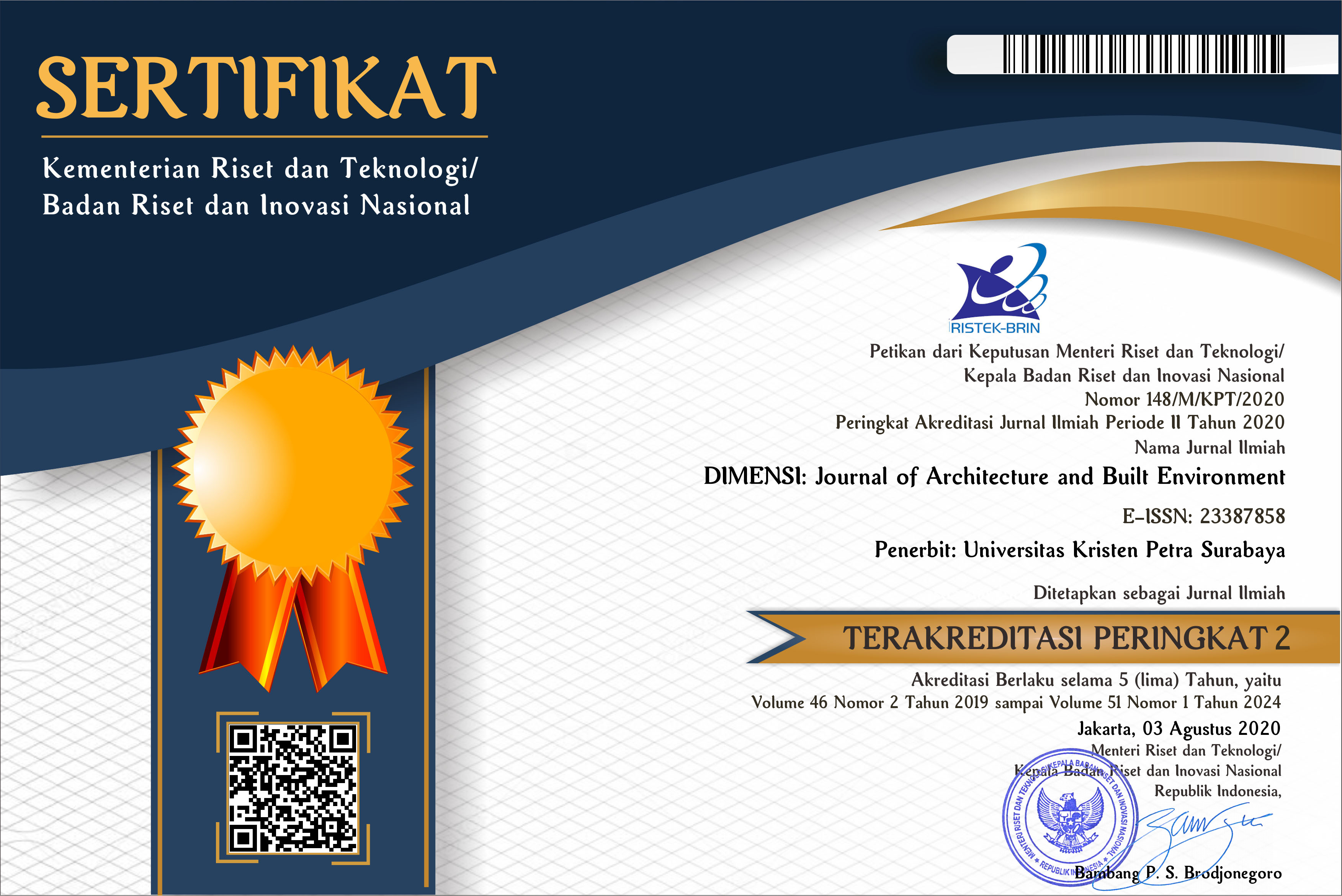CORE HOUSE: A STRUCTURAL EXPANDABILITY FOR LIVING Study Case of Yogyakarta Post Earthquake 2006
 :
:
https://doi.org/10.9744/dimensi.36.1.pp.%2010-19
Keywords:
core house, java earthquake 2006, structural extension, post disaster reconstructionAbstract
The house reconstruction after Java Earthquake 2006, is an example of how more than 180,000 units house were constructed within less than a year. Disaster event—such earthquake—is not only ruining “a house” but also “a life” of many families. They lost their house, belonging, and even beloved family. They suffered shortage of supports to revive their owned family life. In the same time, support from others, donors, and government were definitely limited. A strategy to cope with the issue should be addressed to speed up a house reconstruction for family life revitalization within a lack of resources. A core house is one of concepts or models using a small and simple replicable construction which easily adaptable by community. This small earthquake resistance house is designed to have economic construction cost so that this approach could maximize the number of family impacted. The core house is expected to be expanded by families through process of construction support sharing or a subsidized approach among government, donors, and family owned sources.Downloads
Download data is not yet available.
Downloads
Published
2009-02-25
How to Cite
Ikaputra, I. (2009). CORE HOUSE: A STRUCTURAL EXPANDABILITY FOR LIVING Study Case of Yogyakarta Post Earthquake 2006. DIMENSI (Journal of Architecture and Built Environment), 36(1), pp. 10-19. https://doi.org/10.9744/dimensi.36.1.pp. 10-19
Issue
Section
Articles
License
Authors who publish with this journal agree to the following terms:
- Authors retain copyright and grant the journal right of first publication with the work simultaneously licensed under a Creative Commons Attribution License that allows others to share the work with an acknowledgement of the work's authorship and initial publication in this journal.
- Authors are able to enter into separate, additional contractual arrangements for the non-exclusive distribution of the journal's published version of the work (e.g., post it to an institutional repository or publish it in a book), with an acknowledgement of its initial publication in this journal.
- Authors are permitted and encouraged to post their work online (e.g., in institutional repositories or on their website) prior to and during the submission process, as it can lead to productive exchanges, as well as earlier and greater citation of published work (See The Effect of Open Access).

















